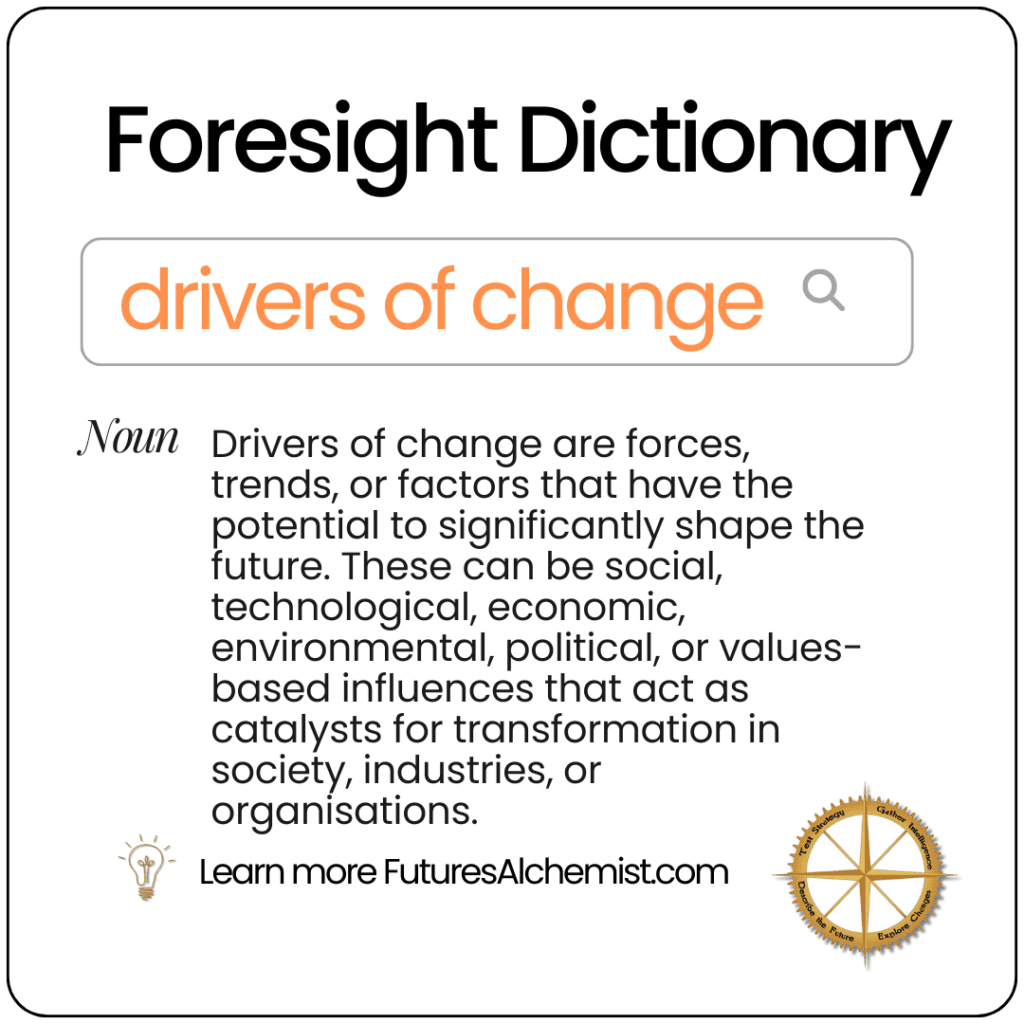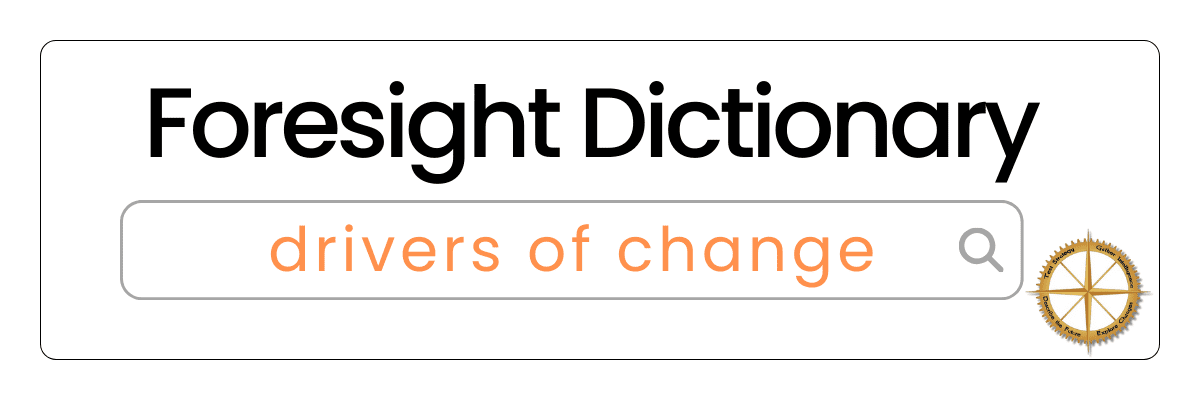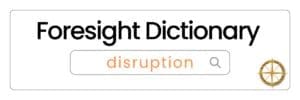

Definition
Drivers of change are forces, trends, or factors that have the potential to significantly shape the future. These can be social, technological, economic, environmental, political, or values-based influences that act as catalysts for transformation in society, industries, or organisations.
Example
Digital Transformation
A real-world example of a driver of change is the ongoing digital transformation. This driver has reshaped numerous industries, from retail (e.g., the rise of e-commerce) to entertainment (e.g., streaming services), and continues to impact areas like education (e.g., online learning) and healthcare (e.g., telemedicine).
Ask yourself
- What are the most significant trends influencing my industry or field?
- How might these drivers interact with each other to create new scenarios?
- Which drivers are likely to have the most impact in the short, medium, and long term?
- Are there any weak signals that could become major drivers in the future?
- How can we better monitor and anticipate emerging drivers of change?
Tools
- PESTLE Analysis: Examines Political, Economic, Social, Technological, Legislative, and Environmental, factors
- Trend Mapping: Visualises how different trends might evolve and intersect over time
- Horizon Scanning: Systematic process for detecting early signs of potentially important developments
- Cross-Impact Analysis: Assesses how different drivers might influence each other
- Causal Layered Analysis: Explores deeper, systemic causes of change




